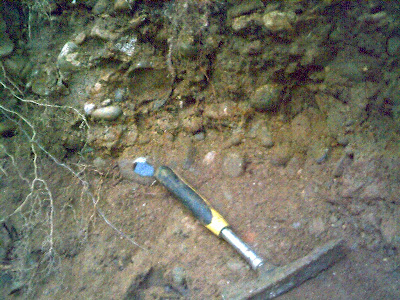 There are at least six different layers in this excavation, including the ever present red clay beneath the gravel layer. These two layers are to be found at all the locations i have excavated in the south west area of Cleveland, so i now think there is more than a good possibility that this sequence of layers extend from at least Stainton to Ormesby beck in the cypress road area of Marton Middlesbrough.
There are at least six different layers in this excavation, including the ever present red clay beneath the gravel layer. These two layers are to be found at all the locations i have excavated in the south west area of Cleveland, so i now think there is more than a good possibility that this sequence of layers extend from at least Stainton to Ormesby beck in the cypress road area of Marton Middlesbrough.
More can be viewed regarding the Stainton gravel beds by clicking the link below















































